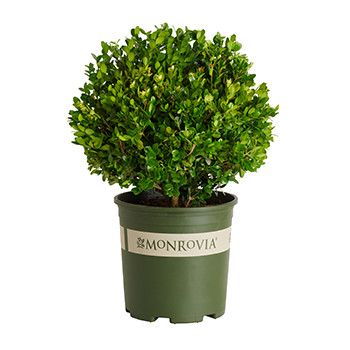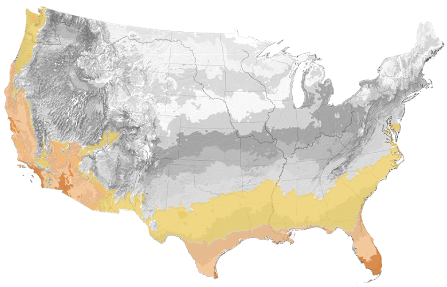You're growing in this Zip Code:
Change LocationDiscover Plants for Your Area
Swan Lake® Camellia
Camellia japonica 'Monke'
Retailers Near You
| Description | Very large, snow white, semi-double, peony-like blooms contrast beautifully against the glossy, dark green foliage. Excellent as an evergreen specimen in a woodland garden, as a privacy screen, or in a container. Cut flowers are lovely floating in a bowl of water. A prized mid-to late season bloomer for milder regions. |
|---|---|
| Bloom Time | Winter through mid-spring |
| Deciduous/Evergreen | Evergreen |
| Special Features | Easy Care, Non-toxic to Cats and Dogs |
| Growth Rate | Moderate |
| Growth Habit | Upright |
| Flower Attributes | Flowers for Cutting, Showy Flowers |
| Landscape Use | Border, Container, Espalier, Privacy Screen |
| Design Ideas | Use in a protected place in the garden, such as an east facing entryway, and be rewarded with handsome evergreen foliage and early season white flowers. Both the blooms and foliage are fine additions to indoor winter cut flower arrangements. Beautiful as a foundation plant, in a container or as part of a Zen tranquility garden. |
| Flower Color | White |
| Foliage Color | Dark Green |
| Companion Plants | The beautiful white blooms of Swan Lake pair with a huge assortment of perennials, shrubs and trees. Combine with the lovely purple blooms and foliage of Coral Bells, Astilbe, and Azalea. For those shady beds close to your outdoor patios, create a moonlight garden with white blooming Astilbe, Hydrangea, and Gardenia. Provide some filtered shade with small stature, white blooming trees like Apple Serviceberry, and Redbud. |
| Care Instructions | Provide organically rich, well-drained, acidic soil. Keep roots cool with a thick layer of mulch. Water deeply and regularly during the first growing season to establish an extensive root system; reduce frequency, once established. Prune lightly to shape and feed with an acid fertilizer after flowering. |
| History | Camellias are native to eastern and southern Asia. C. japonica was imported into the Philippines but is native to China, Japan, Korea and Taiwan. The genus Camellia was named by Carolus Linnaeus who named it for a Jesuit missionary Georg Kamel, who cultivated an important garden of local medicinal plants on the Philippine Island of Luzon in the 17th century. Swan Lake was a seedling developed in the late 1950's and introduced by Monrovia in 1969. Red camellias are a symbol of wealth and white Camellias signify loveliness. Camellias represent longevity and faithfulness and have long been a primary floral component in Asian weddings. |
| Lore | Awarded the Harold Cawood Award by the American Camellia Society in 1999. and again in 2001 for being the best white Camellia. |
| Description | Very large, snow white, semi-double, peony-like blooms contrast beautifully against the glossy, dark green foliage. Excellent as an evergreen specimen in a woodland garden, as a privacy screen, or in a container. Cut flowers are lovely floating in a bowl of water. A prized mid-to late season bloomer for milder regions. |
|---|---|
| Bloom Time | Winter through mid-spring |
| Deciduous/Evergreen | Evergreen |
| Special Features | Easy Care, Non-toxic to Cats and Dogs |
| Growth Rate | Moderate |
| Growth Habit | Upright |
| Flower Attributes | Flowers for Cutting, Showy Flowers |
| Landscape Use | Border, Container, Espalier, Privacy Screen |
|---|---|
| Design Ideas | Use in a protected place in the garden, such as an east facing entryway, and be rewarded with handsome evergreen foliage and early season white flowers. Both the blooms and foliage are fine additions to indoor winter cut flower arrangements. Beautiful as a foundation plant, in a container or as part of a Zen tranquility garden. |
| Flower Color | White |
| Foliage Color | Dark Green |
| Companion Plants | The beautiful white blooms of Swan Lake pair with a huge assortment of perennials, shrubs and trees. Combine with the lovely purple blooms and foliage of Coral Bells, Astilbe, and Azalea. For those shady beds close to your outdoor patios, create a moonlight garden with white blooming Astilbe, Hydrangea, and Gardenia. Provide some filtered shade with small stature, white blooming trees like Apple Serviceberry, and Redbud. |
| Care Instructions | Provide organically rich, well-drained, acidic soil. Keep roots cool with a thick layer of mulch. Water deeply and regularly during the first growing season to establish an extensive root system; reduce frequency, once established. Prune lightly to shape and feed with an acid fertilizer after flowering. |
|---|
| History | Camellias are native to eastern and southern Asia. C. japonica was imported into the Philippines but is native to China, Japan, Korea and Taiwan. The genus Camellia was named by Carolus Linnaeus who named it for a Jesuit missionary Georg Kamel, who cultivated an important garden of local medicinal plants on the Philippine Island of Luzon in the 17th century. Swan Lake was a seedling developed in the late 1950's and introduced by Monrovia in 1969. Red camellias are a symbol of wealth and white Camellias signify loveliness. Camellias represent longevity and faithfulness and have long been a primary floral component in Asian weddings. |
|---|---|
| Lore | Awarded the Harold Cawood Award by the American Camellia Society in 1999. and again in 2001 for being the best white Camellia. |
Retailers Near You
About Us
We have been pioneers and craftsmen in the art of growing plants for nearly
100 years. Since our founding in Southern California by Harry E. Rosedale, Sr.
in 1926, we have been absolutely dedicated and obsessed with quality.
We have been pioneers and craftsmen in the art of growing plants for nearly 100 years. Since our founding in Southern California by Harry E. Rosedale, Sr. in 1926, we have been absolutely dedicated and obsessed with quality.








